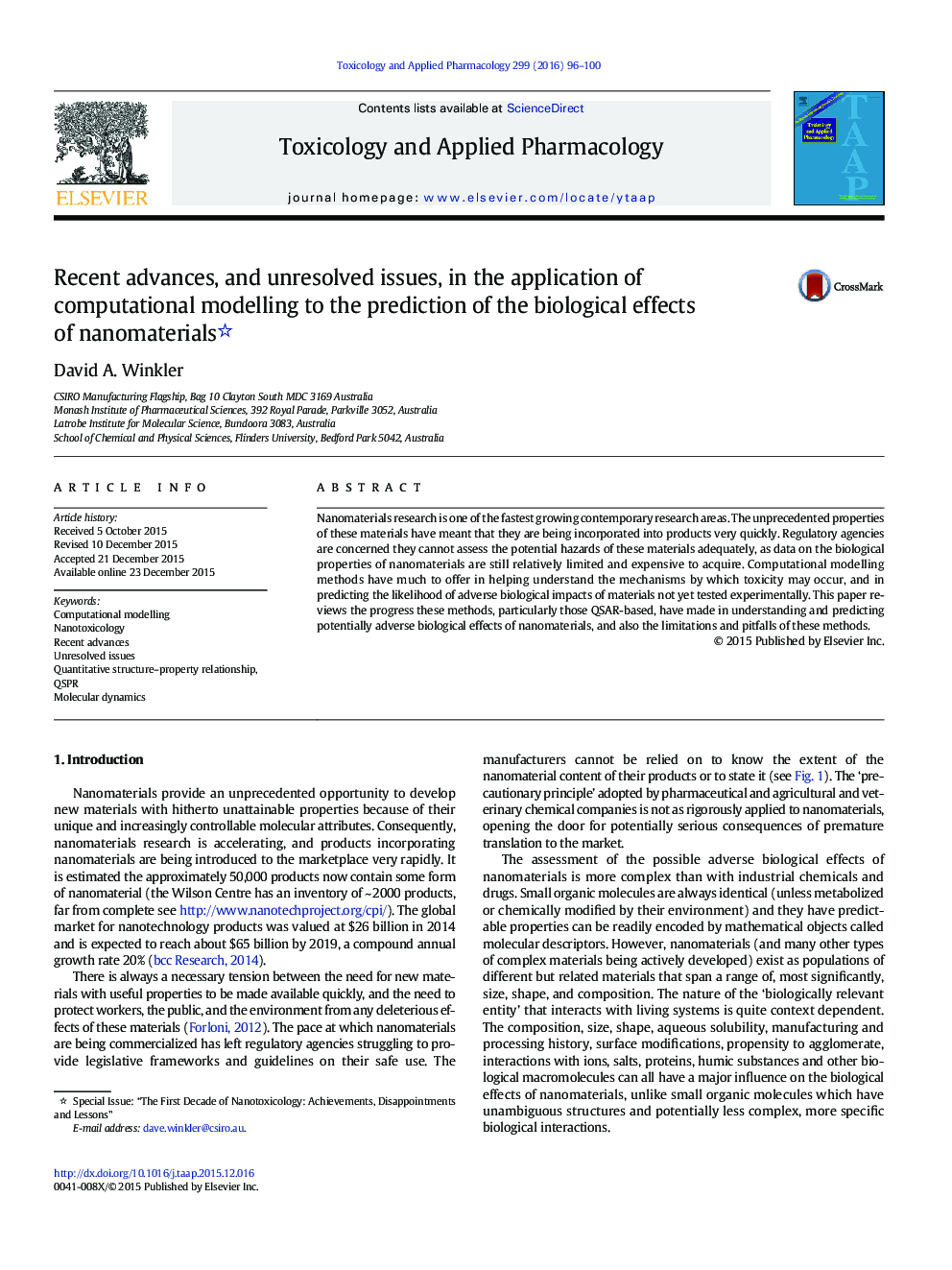| کد مقاله | کد نشریه | سال انتشار | مقاله انگلیسی | نسخه تمام متن |
|---|---|---|---|---|
| 2568123 | 1561163 | 2016 | 5 صفحه PDF | دانلود رایگان |
• Nanomaterials regulators need good information to make good decisions.
• Nanomaterials and their interactions with biology are very complex.
• Computational methods use existing data to predict properties of new nanomaterials.
• Statistical, data driven modelling methods have been successfully applied to this task.
• Much more must be learnt before robust toolkits will be widely usable by regulators.
Nanomaterials research is one of the fastest growing contemporary research areas. The unprecedented properties of these materials have meant that they are being incorporated into products very quickly. Regulatory agencies are concerned they cannot assess the potential hazards of these materials adequately, as data on the biological properties of nanomaterials are still relatively limited and expensive to acquire. Computational modelling methods have much to offer in helping understand the mechanisms by which toxicity may occur, and in predicting the likelihood of adverse biological impacts of materials not yet tested experimentally. This paper reviews the progress these methods, particularly those QSAR-based, have made in understanding and predicting potentially adverse biological effects of nanomaterials, and also the limitations and pitfalls of these methods.
Journal: Toxicology and Applied Pharmacology - Volume 299, 15 May 2016, Pages 96–100
